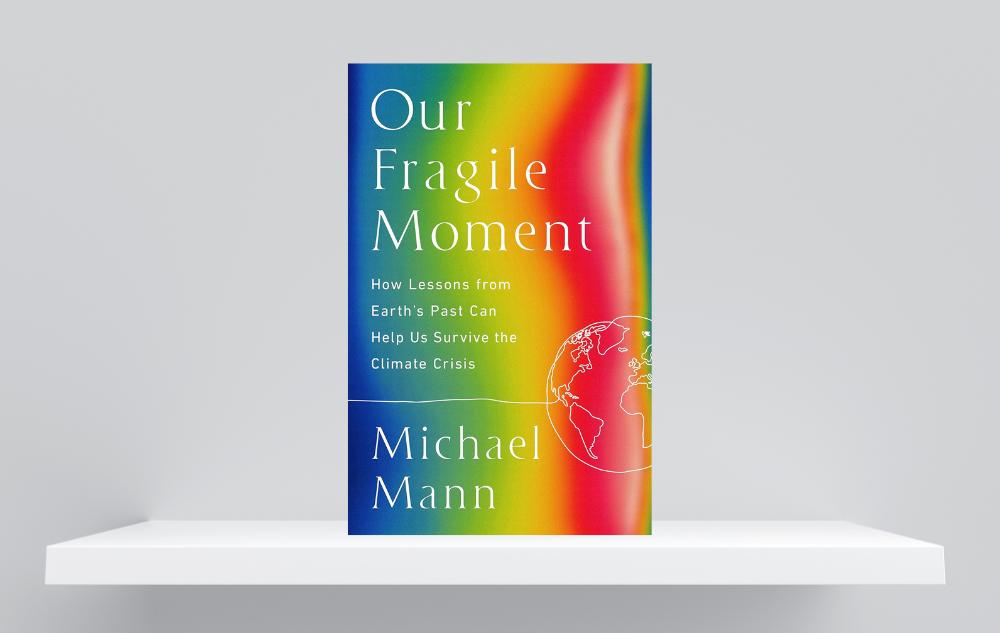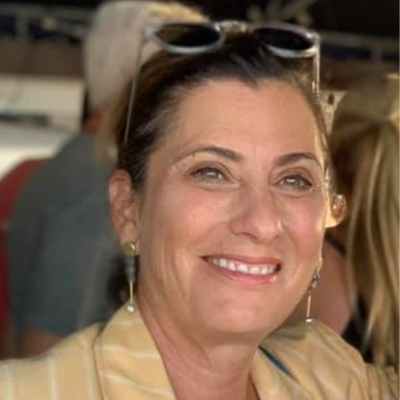Lorie Buckingham, OPL Founder and Wayfinder, is passionate about the planet. She shares her reflections about extreme heat and climate change with the One Planet Life community after reading Michael Mann’s recent book, Our Fragile Moment.
It is a hot summer. Our climate situation is serious.
Have you wondered when we learned about climate change? We don’t have to look further than Michael Mann, a professor of climate science at the University of Pennsylvania. He knows as much about climate science as anyone on Earth. In 1998, Mann rose to fame for publishing a graph, dubbed the “hockey stick,” in Nature, a leading multidisciplinary science journal. The graph portrayed a dramatic illustration of a warming planet. We have known about climate change for a long time.
Mann is the best at explaining our fragile moment and how our climate shapes us.
Michael Mann later wrote the book Our Fragile Moment: How Lessons From the Past Can Help Us Survive the Climate Crisis, in September 2023. He shares: “distant rodent-like ancestors who crawled out from the shadows of dinosaurs 5 million years ago, when our less-distant prime ancestors came down from the trees to hunt on Ancient African savannas, the climate has shaped us.” Ice ages have come and gone for several hundred thousand years and created the conditions for our evolution and everything on Earth. Our Earth and all the life on it is a breathtaking story of life.
Since then, civilizations have come and gone, and climate change has been implicated in much of the change. Amazingly, human civilization as a whole has been remarkably stable and has thrived. Our success and stability coincide with a timeframe in which global temperatures have been stable.
The hockey stick graph in 1998 was an early model. While there is much more scientific information available today, the story is the same. We are experiencing extreme heat and unprecedented climate changes caused by human activities.
Mann looks back at the major interglacial cycles and extinction events to better understand how current climate change will impact us.
Earth has many systems and cycles that interact with each other. Taking into account Earth’s cycles, scientists believe the planet should have begun the slow transition from our current warm interglacial period to a colder glacial condition about 9,000 years ago. This expected cooling should result in a slow swing from the peak interglacial period to the glacial period over 100,000 years (called the eccentricity cycle) with roughly a 9-degree Fahrenheit temperature change. The glacial period would usher in a drop in CO2 levels, cooling temperature, and more extensive ice cover. But this is not happening. What is counteracting Earth’s regular cycles?
William Ruddiman, paleoclimatologist and Professor Emeritus at the University of Virginia, argues that this natural cooling was offset by human-caused greenhouse warming. There were no coal-fired plants or cars thousands of years ago. But humans have increasingly moved across the earth and deforested large swathes of land, releasing more and more CO2 into the atmosphere. Because of this, we have extended our current perfect, life-sustaining period for human civilization.
Now, we have gone too far in a short time. We are rapidly forcing our beloved Earth out of this perfect period by continuing to emit massive CO2 outputs into the atmosphere. As a result, we are dramatically reducing biodiversity, the lifeblood of a healthy planet. We are polluting our waterways with plastics and other waste. And we are doing all of this in the blink of an eye.
Human’s natural focus on short time frames (lifetimes) makes us oblivious to our impact on Earth’s millenia-long cycles.
As Mann says: “In the span of just a couple of centuries, we developed technology that takes millions of years of buried carbon and returns it to the atmosphere in a geological instant. Quoting again the great Carl Sagan, planetary scientist and astronomer: “Our civilization runs by burning the remains of the humble creatures who inhabited the earth hundreds of millions of years before the first humans came on the scene. Like some ghastly cannibal cult, we subsist on the dead bodies of our ancestors and distant relatives.”
Let’s take that in for a minute. Earth has major cycles that change the climate, but these cycles occur over hundreds of thousands of years. So, while these extreme heat and climate changes can be devastating, life has time to adjust and evolve. But unfortunately, we are on a rocket ship of climate change in only a few years. And the ramifications will last for hundreds of thousands of years. For example: if the ice caps fully melt, we will never be able to bring them back. Even if humans used technology to pull CO2 from the air and reduce the Earth’s temperature, the ice will not reform quickly. It would take millions of years before ice caps would be present again. So from a human perspective: once ice caps are gone, they’re gone forever.
Mann shares the science and his understanding of the major dying events and what they may mean for us.
Mann shares insights from the great dying that occurred about 450 million years ago. During this major cooling, ice became built up and sea levels dropped. About half of life forms in existence at the time perished. This includes the dinosaurs, who we know perished 65 million years ago when a big asteroid struck Earth. Each of Earth’s previous cycles has a lesson on how the planet’s systems and cycles react. None are exactly like our current situation, but they hold clues.
Does this mean we are doomed? The answer is up to us. As Mann states, we have the technology know-how to decarbonize the global economy. We can transition to clean energy and climate-friendly agriculture and land use. The major obstacle is the change it requires of people, companies, and governments. Anything that changes power and economics faces stiff obstacles, even in the face of real-world impacts.
We do need to act. Climate changes are impacting people now.
As Mann reminds us: “The 2003 European heat wave that saw 30,000 people perish was a sign of things to come. Recent studies suggest that we are now experiencing as many as five million deaths a year from heat stress and dangerous weather extremes. Add another 4 million deaths a year from air pollution generated by fossil fuel burning, and that is 9 million. In one year, the combined deaths are nearly twice the total recorded number of deaths worldwide from the COVID-19 pandemic.”
I agree with Mann. This is not the world we want for ourselves or our children. Our future is not decided. So, let us rally and make the change for a better world.

Take a deeper dive.
Our Fragile Moment: How Lessons from Earth’s Past Can Help Us Survive the Climate Crisis
An enlightening read that explains how Earth’s natural, millenia-long cycles and planetary conditions became optimal to support life.
This article was shared by OPL Founder and Wayfinder Lorie Buckingham.
Learn more about Lorie.












